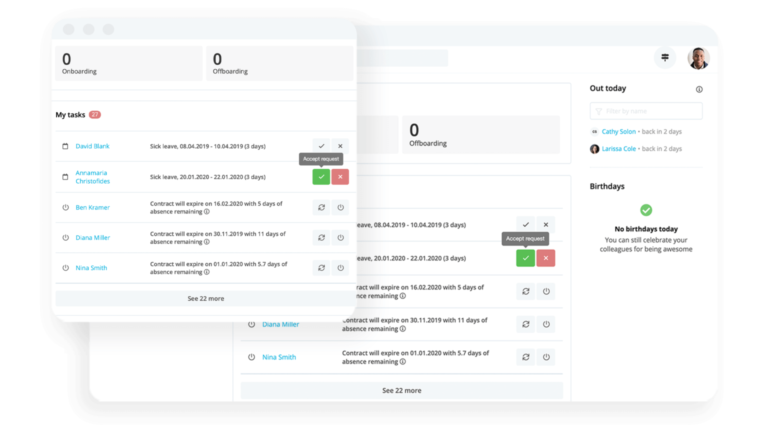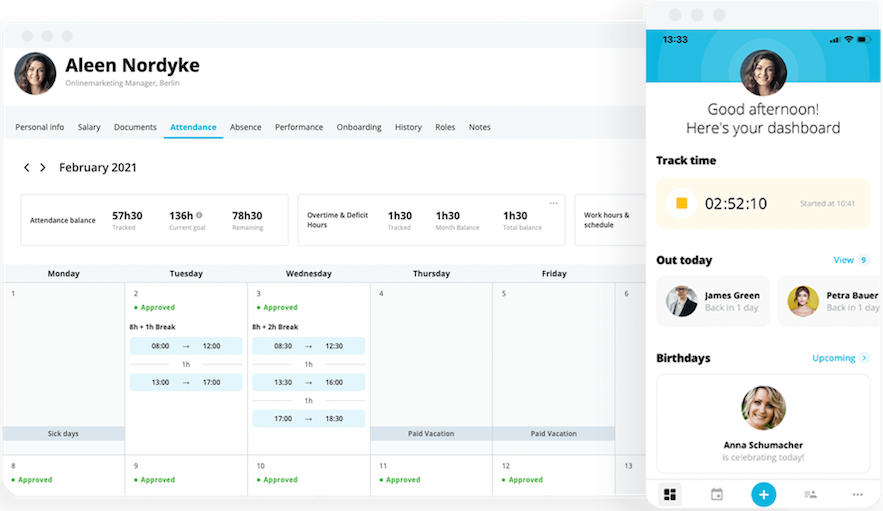
People Strategy Guidebook
A free guide to help power your next great people strategy.
Download our guide to developing your organization’s own people strategy today.The Practitioner’s Guide to Excellent Organisational Design
Do you think organisational design is only about who reports to who in your organisation? Think again. In reality, it can be the driving force behind an organisation’s success or failure. It encompasses everything from the technology your people use to the way they communicate.
In this article, we explain what organisational design is and explore some of the key drivers that can lead to a need for rethinking your own organisational design. We’ll also cover some of the most important factors to consider in the design process.
Key facts:
Organisational design is the process of reviewing and rethinking the ways an organisation operates to bring them in line with its core strategy and mission.
There are many factors that can lead to the need for a redesign, including external or societal factors and core changes within the organisation.
Organisational design is not just about reorganising a company’s reporting structure. It covers everything from the organisation’s processes, policies and procedures to its people practices and performance metrics.
Contents
- 1What is Organisational Design?
- 2Organisational Design vs. Organisational Development
- 3What is HR’s Role in Organisational Design?
- 4When Is the Best Time to Initiate Org Design?
- 55 Factors Impacting Organisational Design
- 6Understanding the Organisational Design Process
- 7Frequently Asked Questions About Organisational Design
- 8Free Up Time for Strategic Initiatives With Personio
What is Organisational Design?
Organisational design, or org design, is the process of reviewing and changing how an organisation runs. It is a holistic, far-reaching process that requires a thorough review of the entire organisation, including its systems, processes, people practices, policies, culture and ways of measuring performance.
Effective org design requires practitioners to look at all of this in the context of the wider environment. This includes the country the organisation operates in, its competitors, the state of the market and the needs and desires of its customers.
Organisational Design vs. Organisational Development
Organisational design is a system-wide review and restructuring of an entire organisation. Once this process is complete and the changes have been implemented, new practices are maintained through organisational development.
You can think of the organisational design process like an architect designing a house. They have to account for all of the plumbing, electrics and foundational support that the building will need. And they also have to consider what the house will look like and how practical it will be to live in.
In this metaphor, organisational development is more like a building maintenance service that comes along after the house is complete. It might solve small problems like fixing a leaky tap or repainting a bedroom — but its purpose isn’t to rebuild the house from the ground up.
What is HR’s Role in Organisational Design?
HR and people teams have a key role to play in organisational design. This is because they typically have access to people data and visibility over the entire organisation. They understand the core values, motivations and challenges that underpin everything the organisation does — even those that are ‘unspoken’ and difficult to quantify.
When Is the Best Time to Initiate Org Design?
The most common factors that lead to the need for organisational design can be broken down into three categories:
1. Internal and External Factors
Both internal and external factors can result in the need to redesign an organisation from the inside. Examples of external factors include:
Changes to customer demand or behaviours
A new competitor entering the market
A change in legislation that impacts your industry
Technological developments
Societal events such as the pandemic
Internal factors include:
Changes to leadership
The introduction of a new piece of technology
The need to significantly reduce operating costs
In these situations, although the actual push for change comes from inside the organisation, there are still external factors at play.
2. Core Changes in the Organisation
Most organisations change over time, and the strategy, goals and mission that drive them can change too. When this happens, the company’s leadership team might have to rethink the organisation’s design to ensure it’s aligned with the new strategy.
This type of organisational design is future-focused and usually implemented by the C-Suite. It involves a review of the entire operation to determine which elements are already aligned with the new strategy, and which ones need to change.
3. A Need to Adapt or Realign
There are many reasons that an organisation might need to adapt, and they’re not always related to huge, seismic changes to society or the market. A more subtle reason is when an organisation’s practices have gradually developed over time. Eventually, leadership might find that they are no longer operating in line with the strategy that the company is trying to implement.
For example, an organisation that has grown quickly might find that its senior leaders are having trouble getting messages through to staff on the ground. In this case, one solution might be to implement an organisational design process that involves adding extra layers of management.
15,000 organisations trust Personio for this reason

Just like LUSH and Premier Inn, trust Personio's all-in-one HRIS to upgrade your people operations for now and into the future. Click below to learn more about us.
Book Your Demo5 Factors Impacting Organisational Design
Here are some of the key factors that you need to consider when thinking about organisational design:
1. Company Strategy and Mission
A company’s mission and strategy determine its strategic priorities and direction. This should be the guiding force behind any organisational design process.
2. Operating Market
The market that a company operates in has a huge impact on its strategy and positioning and can affect its organisational design too.
For example, if a company operates in a stable market with few competitors and a solid customer base, they have little need to innovate. Instead, they can use their organisational design to optimise for efficiency and increase their profit margins.
If you operate in a more unstable market, where the competition is fierce and customers are more fickle, designing for flexibility and adaptability is a better strategy.
3. Company and Workforce Size
The size of your workforce also has a big impact on organisational design. After all, a small organisation with just 20 employees has very different challenges from a huge enterprise with multiple locations and a headcount in the thousands.
Small organisations tend to have flatter structures, and a focus on openness and communication. Larger ones may have to work harder to ensure every employee understands the company’s key values and mission. They also usually need stricter protocols in place for things like communication and decision-making.
4. Company Culture
Every organisation has its own unique culture, whether or not they’ve put work into developing it. And culture has a big influence on organisational design.
For example, an organisation with a culture of trust, accountability and autonomy probably wouldn’t look to implement a complicated decision-making process that involves a chain of several people.
This can also work the other way around: an organisation’s design and structure can influence its culture.
5. Technology
The technology that a company uses can have a significant effect on the design of the organisation. For example, when a company has strong systems for storing and sharing information, they’re in a better position to encourage autonomous decision-making, and likely have effective ways of communicating too.
A good example of this happened during the COVID-19 pandemic. Companies that were equipped with the right tools and technologies were able to smoothly transition to remote work without impacting their operations.
Understanding the Organisational Design Process
There’s no one right way to manage the process of org design. That said, over the years, many individuals and organisations have developed frameworks or models for understanding organisational design, which could help you to structure your process.
Examples include McKinsey’s ‘7-S’ framework, Lewin’s ‘Unfreeze, Change, Refreeze’ model and the Galbraith ‘Star Model’. You can read about some of these models and learn more about change management in our article on managing workplace change.
What these models have in common is that they look at organisations as a series of interconnected systems, processes and people. They assume that making changes in one area will cause effects in another. They are all inward-looking models that focus on transforming the organisation from the inside.
However, some organisations (particularly those operating in tricky markets) might need to consider other models that are more agile and adaptable. Things like joint ventures, collaborations and partnership networks are all examples of newer, more agile ways of working.
Frequently Asked Questions About Organisational Design
Here are the answers to a few FAQs about the organisational design process.
What Is Organisational Design?
Organisational design is the process of assessing and reviewing an organisation’s structure, processes, people, policies and more, with a view to improving performance. The idea is to align every aspect of the organisation with its core strategy.
Who Is Involved in Organisational Design?
Organisational design initiatives are often led by the C-Suite. However, they can and should involve various stakeholders from across the organisation. For example, IT departments have a key role to play in rethinking and redesigning an organisation’s technological equipment and processes. HR and people teams also play an important role.
How Should Organisational Design Be Managed?
There’s more than one way to manage organisational design, and there are many factors to consider. Models like McKinsey’s 7-S framework or Lewin’s change management model can provide a useful starting point.
Free Up Time for Strategic Initiatives With Personio
Developing and implementing effective people practices is a key element of organisational design. The problem is, HR teams are often too tied up with repetitive tasks, processes and admin to get involved with strategic initiatives.
The solution? Investing in an HR software solution that can automate, simplify and speed up a whole range of HR tasks. Personio gives HR teams the time to contribute their valuable insights to initiatives like organisational design, without core HR being left undone.
Want to learn more? Request a free demo to see Personio in action.
